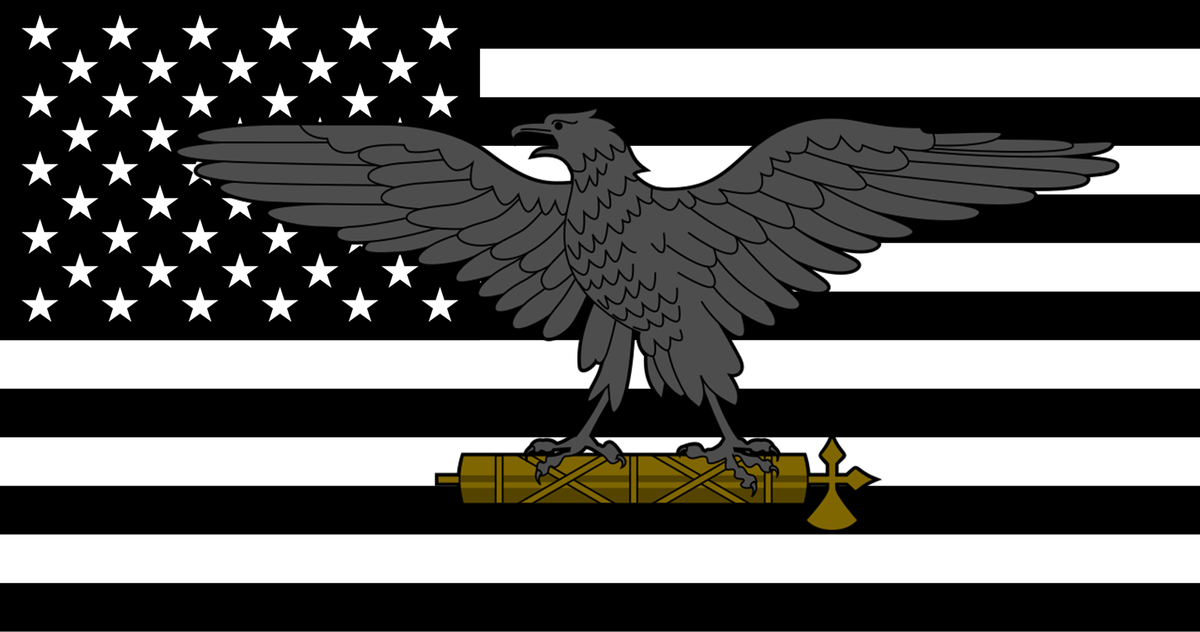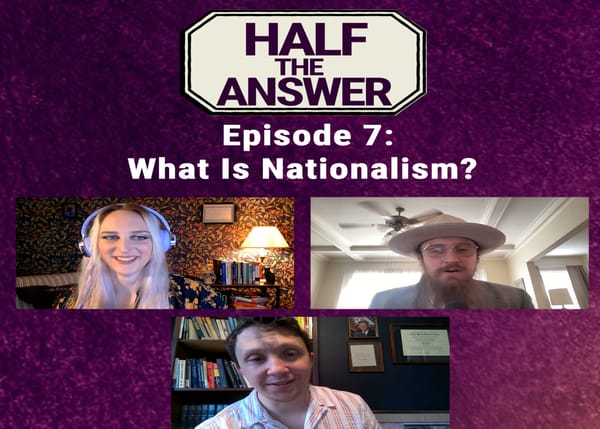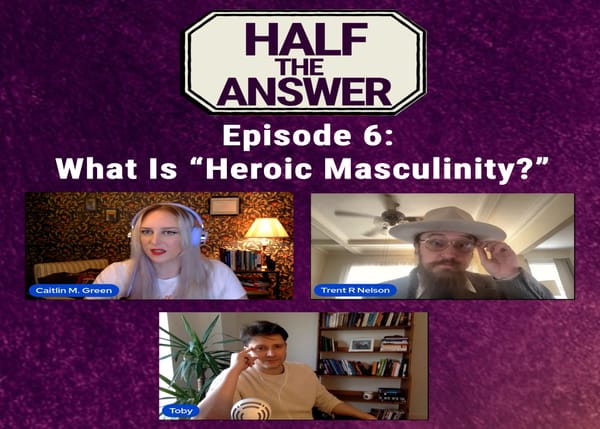Yes, It's Fascism
It’s not an omen or threat or hint of fascism—it’s the thing itself.

There was a considerable debate during and after Trump’s first term as to whether he, and the political formation he headed, should count as fascist. Although that debate is over with high profile skeptics throwing in the towel (John Ganz, enjoy your victory lap), it remains unclear what the triumph of the ‘yes, it’s fascism’ side means because some high profile entries ran together fascism and authoritarianism as if they were the same. Given how little most Americans know about history and political theory, it’s easy to be confused about which of these two the Trump regime is attempting to inaugurate in this moment of reactionary revolution. Since the difference can be huge, it’s vital that we get it straight.
Fascism is more than just really bad authoritarianism. While in many non-fascist authoritarian regimes most people can more or less live a normal life if you keep your head down and stay out of politics, fascist leaders want to force all of society into alignment with their vision of social redemption. They seek not just to control the state but to purge all major social institutions of any independence and bend them to the regime’s purposes. Fascists won’t leave you alone unless you’re actively assisting their vision, often demanding public pledges of submission or complicity in the regime’s crimes.
Because of this intrusiveness, fascism and authoritarianism generate different potentials for mobilizing opposition. Either sort of movement could, of course, deploy newly seized power gradually or selectively to generate uncertainty and division among their potential opponents. But when a newly risen movement moves swiftly to assert its power far beyond the scope of a more limited authoritarianism—not being content with seizing key power centers like the military, for instance, but reaching for a more comprehensive takeover of economic, cultural, and social life—the only remaining room for uncertainty lies in self-deception. This clarity produces considerably more scope for solidaristic mobilization against a budding fascist regime before it has consolidated power.
It thus matters enormously whether the new Trump regime is fascist or simply authoritarian. Authoritarianism is mainly about the structure of power in government. That means government lacks effective checks & balances and, as a result, there’s an intense concentration of power in the executive. Whatever formal title the leader has—general secretary, prime minister, president—he (it’s almost always a he) can get his way over the will of any other actor or institution in government. Most importantly, however, state power in an authoritarian regime is unaccountable to the mass public, meaning for instance that incumbents can’t lose elections even if the people want them gone.
The place to look for fascism is in the politics and program of a political movement; it’s about how they talk and what they aim to do rather than in the structure of power. Of course, they want the authoritarian structure of executive-focused unchecked power and seek to build it where it’s lacking. But this is in service of the core fascist mission: a cultural rebirth in which the nation, understood as its (racially) pure or ‘true’ people, is saved from destruction and its enemies are purged from within.
Thus, all forms of fascism are authoritarian, but not all authoritarianisms are fascist. Authoritarianism encompasses many non-fascist regimes. Recognizing the fascism of Trump II requires disaggregating these two projects.
The authoritarian agenda of the Trump regime is apparent in the unilateral abolition of federal agencies, illegal firings, the targeting of internal checks such as inspectors general and anti-corruption offices, intimidation of judges, general executive aggrandizement and unilateralism seen in the flood of Executive Orders, violation of court orders in spirit or substance, and, above all, the seizure of the power of the purse in impoundment.
The fascist agenda of the Trump regime is found in its multi-front war on civil society—stretching from extortionate civil cases, official investigations, and sanctions imposed against the media, to the intimidation of powerful law firms, to stripping funding from civil society groups and universities, to targeting universities for alleged civil rights violations—its lawless deportation actions, and its total war on diversity and affirmative action initiatives not just in the federal government but among every federal contractor and grantee or grant applicant across American society. Jamelle Bouie identifies this latter part of the agenda as a concerted effort to impose resegregation, revealing the unique Americanness of this Trumpian variant of fascism.
These agendas are obviously overlapping at several points, yet their aims are distinct. The authoritarian agenda prevents any other political actors from being able to protect their rights or interests except via abject supplication to the autocrat and his top cronies. The fascist agenda uses key elements of that same tight monopoly on power against civil society institutions not only to deter them from opposition, as an authoritarian might, but to positively require their affirmative participation in the regime’s program of cultural rebirth. This is exactly what’s happening at Columbia University and the major law firm Paul, Weiss after both signaled they would capitulate to specific lists of Trump administration demands. (Disclosure: I received my Ph.D. from Columbia).
Such micro-management of the internal governance of an American university and out-and-out subversion of a major law firm toward naked ideological goals is what affirmative compliance with a fascist government looks like. It’s not an omen or threat or hint of fascism—it’s the thing itself. Indeed, as Sheri Berman has argued, the Nazi seizure of power cannot be understood absent an appreciation for how the party infiltrated independent civil society organizations—from professional groups and patriotic societies to private clubs and student fraternities—and not only neutralized them as potential bases of opposition but used them to affirmatively solidify their power. Italian fascists in power likewise sought to build out the state’s minute reach into virtually all aspects of society to regenerate the nation.
One of the most important novelties of Trump II marking it as mask-off Actual Fascism is Trump’s deranged expansionism. Recall that some of Trump’s apologists on both the right and left previously insisted on a fantastical vision of Trump as an anti-imperial dove whose instinctive isolationism would reduce American aggression abroad. Though that mirage could never survive scrutiny, occasional empty words reinforcing it opened space for doubt that he was a fascist since it is sometimes thought you can’t have fascism without aggressive military expansionism.
The new addition to the Trumpian repertoire of a consistently expressed desire to annex Canada, Greenland, and the Panama Canal—to say nothing of plans to help Israel ethnically cleanse and colonize Gaza—is thus part of what forecloses the fascism debate, and clarifies that we’re dealing with Actual Fascism, not just authoritarianism.
Fascism’s core political project of national rebirth is highly congruent with foreign conquest because conquest demonstrates the nation’s restored greatness on the only stage where it can be performed: internationally. Though authoritarian governments certainly have a robust history of launching wars of aggression, that aggression need not play the same role in the politics of the regime. Military expansionism was a central element of both German and Italian fascisms since conquest—for Lebensraum in the German case and to inaugurate a new ‘Roman Empire’ in the Italian—was sold as the high road to each regime’s goal of restoring the humiliated nation to glory.
Even if Trump takes no concrete military steps to realize his aggressive vision of an expanding nation, the constant rhetoric of it inscribes the requisite fascist image of a revitalized nation taking its proper place on the world stage into public discourse and the popular imagination. Trump’s ability to trick the media into covering meaningless spats with other countries as foreign policy triumphs suggests considerable latitude for spinning fictions of victory out of whole cloth. And of course, his administration has indeed taken costly diplomatic and economic steps toward this expansionist vision, with explicit public statements about the intention to coerce Canada via tariffs into accepting annexation, and threatening gestures against NATO ally Denmark, including an aggressive speech by JD Vance on Greenland soil.
Trump’s high, across-the-board tariffs provide further evidence for the regime’s Actual Fascism. Radical critiques of American government in the 1990s and 2000s were sometimes couched in terms of a “fascism” consisting in the state’s slavish advancement of the interests of capital. But although historical fascist regimes are doubtlessly capitalist in many economic essentials, particularly their violent opposition to the power of labor, maximal profits to private shareholders are not an important part of the fascist mission. A fascist state cannot be persuasively likened to a deferential servant of capital.
Rather, fascists in power press capital into the service of their own projects. In Nazi Germany, the overriding project after the seizure of power was military rearmament. According to Adam Tooze, German military spending went from less than 1% of national income when the Nazis came to power in 1933 to nearly 10% just two years later, and commanded “as much as a quarter of German industry…in 1935.” Tooze explains that “a reallocation of total national production on this scale had never before been seen in any capitalist state in peacetime.” The Nazi regime bent the German economy into the shape its aims required, generating profits for those capitalists who could advance them, certainly, but shortages and losses for those who couldn’t.
Trump’s tariffs make no sense as economic policy but do make sense as an instance of fascist policy aimed to redeem how the economy works for the imagined Volk, or purified national community. Trump has a fantastical mid-20th century vision of what ‘the economy’ should look like, and who it ought to serve (‘real Americans’) which he aims to restore at any cost. Domestic manufacturing stands at the center of this vision, reflecting a myopic obsession with ‘making things’ which is wildly out of step with the development of advanced interconnected economies.
The fascist project of national rebirth is, for Trump, one of fundamentally transforming the US’s political economy, away from globalized trade and toward (corrupt) domestic producerism that benefits an imagined ‘real America.’ The capitalists who built their investments and logistics networks—and the consumers who patterned their purchases—around the assumption of global trade will simply have to eat the losses and higher costs involved in the transition. Saving the nation exacts a price.
The puzzle of Trumpism has been solved. We no longer require safaris to midwestern diners to illuminate it. Journalists and commentators no longer need to employ euphemism or coin neologisms to describe it. He’s a fascist, and he’s trying to erect a fascist regime in the United States. The only question now is whether he succeeds.



